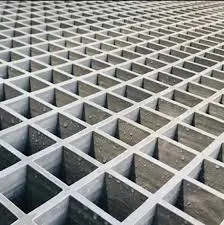
-
 Afrikaans
Afrikaans -
 Albanian
Albanian -
 Amharic
Amharic -
 Arabic
Arabic -
 Armenian
Armenian -
 Azerbaijani
Azerbaijani -
 Basque
Basque -
 Belarusian
Belarusian -
 Bengali
Bengali -
 Bosnian
Bosnian -
 Bulgarian
Bulgarian -
 Catalan
Catalan -
 Cebuano
Cebuano -
 China
China -
 China (Taiwan)
China (Taiwan) -
 Corsican
Corsican -
 Croatian
Croatian -
 Czech
Czech -
 Danish
Danish -
 Dutch
Dutch -
 English
English -
 Esperanto
Esperanto -
 Estonian
Estonian -
 Finnish
Finnish -
 French
French -
 Frisian
Frisian -
 Galician
Galician -
 Georgian
Georgian -
 German
German -
 Greek
Greek -
 Gujarati
Gujarati -
 Haitian Creole
Haitian Creole -
 hausa
hausa -
 hawaiian
hawaiian -
 Hebrew
Hebrew -
 Hindi
Hindi -
 Miao
Miao -
 Hungarian
Hungarian -
 Icelandic
Icelandic -
 igbo
igbo -
 Indonesian
Indonesian -
 irish
irish -
 Italian
Italian -
 Japanese
Japanese -
 Javanese
Javanese -
 Kannada
Kannada -
 kazakh
kazakh -
 Khmer
Khmer -
 Rwandese
Rwandese -
 Korean
Korean -
 Kurdish
Kurdish -
 Kyrgyz
Kyrgyz -
 Lao
Lao -
 Latin
Latin -
 Latvian
Latvian -
 Lithuanian
Lithuanian -
 Luxembourgish
Luxembourgish -
 Macedonian
Macedonian -
 Malgashi
Malgashi -
 Malay
Malay -
 Malayalam
Malayalam -
 Maltese
Maltese -
 Maori
Maori -
 Marathi
Marathi -
 Mongolian
Mongolian -
 Myanmar
Myanmar -
 Nepali
Nepali -
 Norwegian
Norwegian -
 Norwegian
Norwegian -
 Occitan
Occitan -
 Pashto
Pashto -
 Persian
Persian -
 Polish
Polish -
 Portuguese
Portuguese -
 Punjabi
Punjabi -
 Romanian
Romanian -
 Russian
Russian -
 Samoan
Samoan -
 Scottish Gaelic
Scottish Gaelic -
 Serbian
Serbian -
 Sesotho
Sesotho -
 Shona
Shona -
 Sindhi
Sindhi -
 Sinhala
Sinhala -
 Slovak
Slovak -
 Slovenian
Slovenian -
 Somali
Somali -
 Spanish
Spanish -
 Sundanese
Sundanese -
 Swahili
Swahili -
 Swedish
Swedish -
 Tagalog
Tagalog -
 Tajik
Tajik -
 Tamil
Tamil -
 Tatar
Tatar -
 Telugu
Telugu -
 Thai
Thai -
 Turkish
Turkish -
 Turkmen
Turkmen -
 Ukrainian
Ukrainian -
 Urdu
Urdu -
 Uighur
Uighur -
 Uzbek
Uzbek -
 Vietnamese
Vietnamese -
 Welsh
Welsh -
 Bantu
Bantu -
 Yiddish
Yiddish -
 Yoruba
Yoruba -
 Zulu
Zulu
grp scrubber
The Importance of GRP Scrubbing in Environmental Protection
As industries continue to expand and evolve, the need for effective waste management and environmental protection strategies has become more critical than ever. One technological advancement that plays a significant role in ensuring cleaner production processes is the GRP (Glass Reinforced Plastic) scrubber. This equipment is designed to mitigate emissions and pollutants, thus contributing to a more sustainable environment. In this article, we will explore the workings of GRP scrubbers, their applications, and their importance for environmental protection.
Understanding GRP Scrubbers
GRP scrubbers are pollution control devices that utilize a combination of physical and chemical processes to remove harmful pollutants from industrial exhaust gases. Made from glass-reinforced plastic, these scrubbers are particularly valued for their durability, resistance to corrosion, and lightweight nature. Unlike traditional scrubbers, which may be heavy and cumbersome, GRP scrubbers offer both functionality and ease of installation, making them an excellent choice for various industrial applications.
The operation of a GRP scrubber typically involves three stages absorption, chemical reaction, and separation. In the absorption stage, the exhaust gases are passed through a scrubbing liquid, usually water or an alkaline solution, which dissolves the pollutants. Following absorption, chemical reactions take place, facilitating the breakdown of harmful substances into less harmful byproducts. Finally, the separation stage involves the removal of particulates and residual pollutants from the scrubbing liquid, ensuring that only clean air is emitted back into the atmosphere.
Applications of GRP Scrubbers
GRP scrubbers are versatile devices that can be used in various industries, including chemical manufacturing, pharmaceuticals, food processing, and wastewater treatment. In chemical plants, for instance, they play a crucial role in capturing volatile organic compounds (VOCs) and other hazardous air pollutants. Similarly, in wastewater treatment facilities, GRP scrubbers help to manage odors and ensure compliance with environmental regulations.
grp scrubber

Moreover, these scrubbers are increasingly being utilized in power generation and incineration processes, where they reduce the emission of harmful gases such as sulfur dioxide (SO2) and nitrogen oxides (NOx). The adaptability of GRP scrubbers for different applications makes them an essential component of modern industrial practices.
Environmental Impact and Benefits
The environmental benefits of using GRP scrubbers are substantial. By significantly reducing emissions of harmful pollutants, these systems contribute to improved air quality and public health. Furthermore, organizations that utilize GRP scrubbers often see a positive impact on their compliance with environmental regulations, reducing the risk of fines and promoting a corporate image centered around sustainability.
Additionally, the efficiency of GRP scrubbers can lead to considerable savings in operational costs. By capturing and treating waste gases effectively, companies can minimize losses from unregulated emissions and reduce the expenses associated with potential environmental remediation efforts.
Conclusion
In conclusion, GRP scrubbers represent a vital technological advancement in the field of environmental protection. Their effectiveness in removing harmful pollutants from industrial emissions cannot be overstated. As industries face increasing scrutiny regarding their environmental impact, the implementation of GRP scrubbers becomes not only desirable but necessary. By investing in such technologies, businesses can take significant strides toward sustainability while ensuring compliance with regulations that protect our planet. The evolution of GRP scrubbers and their widespread application across various sectors highlight the ongoing commitment to maintaining a cleaner, healthier environment for current and future generations.









